Super User
ANDRITZ to supply new pickling and galvanizing line to Jiuquan Iron and steel (Group) Co., Ltd., China
International technology group ANDRITZ has received an order from Jiuquan Iron and Steel (Group) Co., Ltd., China, to supply a new, high-capacity pickling and galvanizing line for hot-rolled carbon steel strip.
Start-up of the line is planned for the end of 2023.
The ANDRITZ scope of supplies and services comprises the engineering, equipment supply, supervision of erection, and commissioning of the complete pickling and galvanizing line, including the electrical and automation equipment.
With ANDRITZ’s state-of-the-art, sustainable technologies, this line will produce hot-dip galvanized (GI) or ZM-coated /(zinc-aluminum-magnesium) flat steel.
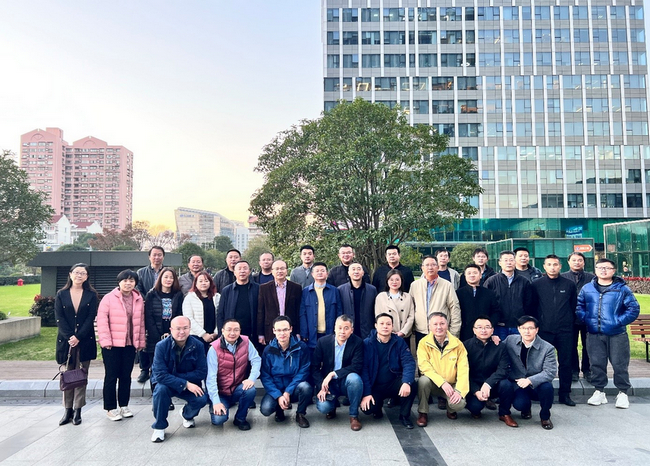 Project team with customer JISCO at the ANDRITZ Shanghai Office © ANDRITZ
Project team with customer JISCO at the ANDRITZ Shanghai Office © ANDRITZ
This order confirms the good and long-lasting relationship between ANDRITZ and Jiuquan Iron and Steel (Group). In 2004, ANDRITZ delivered and successfully commissioned a hot annealing and pickling line and a cold annealing and pickling line for stainless steel for Jiuquan Iron and steel (Group). This was followed by two 20-high cold-rolling mills delivered in 2006. Additionally, ANDRITZ has performed various upgrades and modernizations on existing lines.
Established in China in 1958, Jiuquan Iron and Steel (Group) initially pursued coordinated development in six industrial sectors: iron and steel, nonferrous metals, electric energy, equipment manufacturing, producer services, and modern agriculture. The iron and steel industry has an annual production capacity of 11.05 million tons of crude steel (including 1.2 million tons of stainless steel).
ANDRITZ GROUP
International technology group ANDRITZ offers a broad portfolio of innovative plants, equipment, systems and services for the pulp and paper industry, the hydropower sector, the metals processing and forming industry, pumps, solid/liquid separation in the municipal and industrial sectors, as well as animal feed and biomass pelleting. Plants for power generation, flue gas cleaning, recycling, and the production of nonwovens and panelboard complete the global product and service offering. Innovative products and services in the industrial digitalization sector are offered under the brand name Metris and help customers to make their plants more user-friendly, efficient and profitable. The publicly listed group has around 26,800 employees and more than 280 locations in over 40 countries.
ANDRITZ METALS
ANDRITZ Metals is – via the Schuler Group – one of the world’s leading suppliers of technologies, plants and digital solutions in metal forming. The product portfolio also includes automation and software solutions, process know-how and service.
In the metals processing segment, the business area offers innovative and market-leading solutions for the production and processing of flat products, for welding systems and furnaces, as well as services for the metals processing industry.
QED Highlights EZR Tray™ Air Stripper for Removing VOCs from Contaminated Groundwater and Waste Streams
Offering high removal efficiencies and easy maintenance
Q.E.D. Environmental Systems, Inc., a leading manufacturer of innovative environmental products, announces the patented EZR Tray™ air stripper, a stainless steel tray sliding air stripper, ideal for removing volatile organic compounds (VOCs) from contaminated groundwater and waste streams. The EZR Tray air stripper’s exclusive design results in very high removal efficiencies in an easier-to-maintain process unit.
Offering numerous advantages over other air stripping methods, the EZR Tray air stripper provides easy access for process monitoring and inspection, even while in operation. It is less prone to fouling and can be cleaned by one person with a simple pressure wash. It is also less intrusive at a site and offers a wide turn-down range. Typical treatment costs range from $0.10 to $0.20 per 1,000 gallons of drinking water.
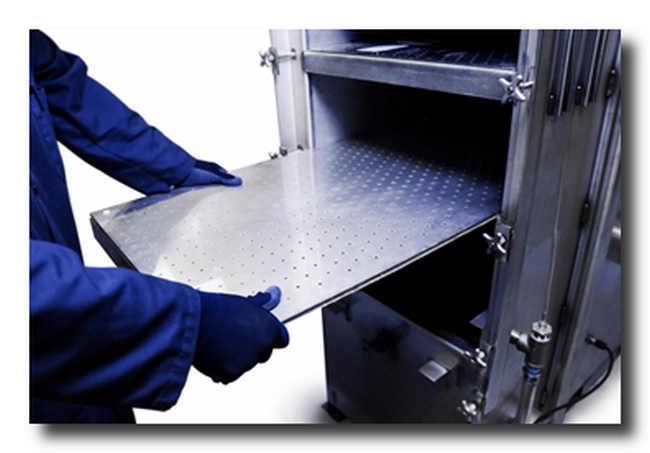
Air stripping with the EZR Tray air stripper is an effective way of removing trihalomethanes (THMs), which can form in drinking water when disinfectants like chlorine break down precursor organic compounds, normally organic solids. As contaminated groundwater enters through the top of the EZR Tray air stripper, millions of air bubbles are forced by blower pressure up through the perforated trays. This creates a turbulent froth zone with an extremely high air-to-liquid surface area for mass transfer of VOCs from liquid to air. Using the froth instead of a conventional tower packing delivers high VOC removal efficiencies, even under fouling conditions. The EZR Tray air stripper is also easier to inspect and maintain than other alternatives.
For more information, visit www.qedenv.com.
About Q.E.D. Environmental Systems, Inc.
Q.E.D. Environmental Systems, a subsidiary of Graco Inc., is a leading manufacturer of innovative environmental pumping systems, landfill products, landfill gas products, and air strippers for use at landfills, mines, oil refineries and other industrial sites, as well as hazardous waste cleanup sites. QED products are used around the world for a wide range of environmental applications, including groundwater sampling, groundwater remediation pumping, landfill leachate and condensate pumping, landfill gas collection and control, landfill and biogas analysis, air stripping and VOC removal, and wireless data acquisition. Based in Dexter, MI, QED serves customers from support centers in Michigan and England. For more information, call 734-995-2547 or contact us at This email address is being protected from spambots. You need JavaScript enabled to view it..
Anritsu and dSPACE Accelerate Simulation and Testing of 5G Automotive Applications
- Joint Showcase for Enhanced Safety at Mobile World Congress 2022 -
Anritsu Corporation and dSPACE, two leading companies in the fields of test and measurement as well as simulation and validation, will jointly demonstrate the integration of PC-based simulation systems with sensor-realistic simulation in a 5G network emulator at the Mobile World Congress 2022 (MWC). The joint showcase will demonstrate how to avoid collisions between vehicles and objects or people in intersections with limited visibility.
The example application used in the demonstration is the advanced intersection collision warning (AICW). For this purpose, sensor-based information is exchanged between the vehicles and the infrastructure in the intersection area through the use of 5G communication technology. In the demonstration, V2X data and video data collected by camera sensors is provided and analyzed to warn of people or objects such as vulnerable road users (VRUs) located in blind spots, commonly found at intersections.. The demonstration uses 5G network slicing technology to establish a separate URLLC link to provide V2X hazard warning data and an eMBB link to share HD video.
Gregor Hordys, responsible for connectivity topics at dSPACE, explains: "This solution adds a state-of-the-art sensor-realistic and vehicle simulation to the radio communication test system to enable testing of advanced applications for connected and cooperative automated driving, based on 5G and edge computing in the lab."
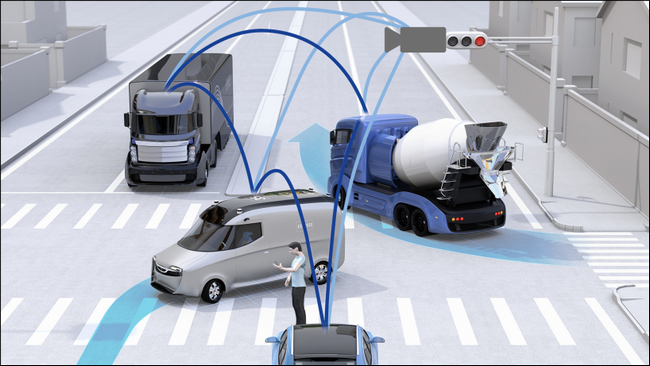 At Mobile World Congress 2022, Anritsu and dSPACE will demonstrate in a joint showcase how to avoid collisions between vehicles and objects or people at intersections with limited visibility.
At Mobile World Congress 2022, Anritsu and dSPACE will demonstrate in a joint showcase how to avoid collisions between vehicles and objects or people at intersections with limited visibility.
"This joint integration and the power of such a solution is a significant step forward for 5G V2X testing and emulation. This industry-leading demonstration is an exciting example of the development of 5G V2X applications," says Jonathan Borrill, Head of Global Market Technology at Anritsu.
To provide a 5G network slicing test environment for automotive V2X use cases, the showcase uses an Anritsu MT8000A radio communication test station and dSPACE VEOS (a PC-based simulation platform) with the dSPACE AURELION solution for sensor-realistic simulation.
The joint showcase will be on display at the Anritsu booth (Hall 5, D41) at the Mobile World Congress 2022, which will be held in Barcelona from February 28 to March 3. It will also be showcased at Anritsu’s Virtual MWC22—Wireless Technology Showroom which will be launched on February 28. Register here to enter the showroom: bit.ly/AnritsuMWC22.
About dSPACE
dSPACE is a worldwide leading provider of simulation and validation solutions for developing connected, autonomous, and electrically powered vehicles. The company's end-to-end solutions are used in particular by automotive manufacturers and their suppliers to test the software and hardware components of their new vehicles long before a new model hits the road. dSPACE is not only a sought-after partner in vehicle development, engineers also rely on our know-how in the fields of aerospace and industrial automation. Our portfolio ranges from end-to-end simulation and validation solutions to engineering and consulting services, training, and support. With over 2,000 employees worldwide, dSPACE has offices in Paderborn, Germany, three project centers in Germany, and serves customers through its regional companies in the USA, the UK, France, Japan, China, Korea, and Croatia
ABB’s latest flexible robotic handling solutions on show at MACH 2022
ABB will showcase its latest advanced automated handling and robotics solutions at MACH 2022 (NEC Birmingham, 4-8 April), including a high payload collaborative robot, machine tending systems to suit every production need and a magnetic levitation-based conveyance system.
Stand 18-310 will feature an example of one of ABB’s latest robotic machine tending solutions. The ABB FlexLoader M for AGV, is a fully automated feeder for automated guided vehicles. Handling all types of workpieces, it can pick straight from the pallet brought to it by the AGV.
ABB’s complete range of FlexLoader M automated machine tending solutions will be shown on the stand in a series of videos and displays, with solutions designed to suit every need, from simple applications to advanced tasks. Today customers are demanding greater choice and customizability with quick delivery times. ABB’s FlexLoader M range accommodates this by enhancing machine utilization, flexibility and responding fast to batch size one, high mix and low volume production. Fast to program and user friendly, no robotic expertise is required making it easy to fine-tune when business needs change over a period.
There will also be a presentation on ABB FlexArc® robotic welding cells, complete robot systems that are available in several flexible, modular packages, offering the best combination of price and performance for custom-built welding.
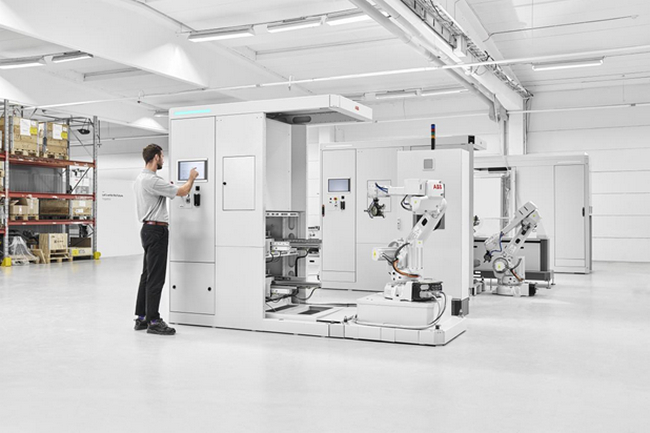 ABB's FlexLoader™ M Tray
ABB's FlexLoader™ M Tray
ABB’s latest high-capacity collaborative robot, GoFa will be present on the stand. Designed as a collaborative partner for a wide range of applications, GoFa offers a 5kg payload and a class-leading 950 mm reach. With a top speed of 2.2 m/s, GoFa is faster than other cobots in its class, while also offering easy programming and a high degree of built-in safety.
Visitors to the stand will see GoFa in action alongside ACOPOS 6D; a revolutionary new handling system that uses magnetically levitating shuttles to carry products and materials to processing stations, eliminating mechanical wear and speeding up transit times. ACOPOS 6D uses a variety of magnetic shuttles to carry payloads of 0.6 to 14 kilograms, reaching speeds of up to 2 m/s. They can move freely in two-dimensional space, rotate and tilt along three axes and offer precise control over the height of levitation. Offering six degrees of motion control freedom, the shuttles can be precisely positioned to within ±5 µm, making ACOPOS 6D perfectly suited for applications with strict positioning requirements.
“The ability to achieve faster, more flexible manufacturing is becoming increasingly important for businesses looking to maximize their productivity and competitiveness,” explains Matthew Rollins, Business Development Manager for ABB Robotics in UK and Ireland. “The solutions on display on our stand are part of a wider portfolio of products and systems that can help companies to take advantage of the real growth opportunities presented by automation.
For more information, visit https://new.abb.com/products/robotics/
ABB (ABBN: SIX Swiss Ex) is a leading global technology company that energizes the transformation of society and industry to achieve a more productive, sustainable future. By connecting software to its electrification, robotics, automation and motion portfolio, ABB pushes the boundaries of technology to drive performance to new levels. With a history of excellence stretching back more than 130 years, ABB’s success is driven by about 105,000 talented employees in over 100 countries. www.abb.com
ABB Robotics & Discrete Automation is a pioneer in robotics, machine automation and digital services, providing innovative solutions for a diverse range of industries, from automotive to electronics to logistics. As one of the world’s leading robotics and machine automation suppliers, we have shipped more than 500,000 robot solutions. We help our customers of all sizes to increase productivity, flexibility and simplicity and to improve output quality. We support their transition towards the connected and collaborative factory of the future. ABB Robotics & Discrete Automation employs more than 11,000 people at over 100 locations in more than 53 countries. go.abb/robotics
Stora Enso supplies renewable wood materials to Sweden’s National Museum of Science and Technology
The construction of Wisdome Stockholm, a scientific experience arena, is now underway. The building at Sweden’s National Museum of Science and Technology in Stockholm has a pioneering design and will be a landmark object for sustainable and climate-smart construction in wood. Stora Enso is the main partner and delivers wood construction materials to Wisdome Stockholm.
Wisdome Stockholm is a spectacular wooden building design of 1,325 square meters with a unique vaulted roof. Inside the building, there is a globe-shaped dome theatre of 21.6 meters in diameter hosting a 3D cinema with a spherical screen.

"We are a proud supplier to this ground-breaking project. Wisdome Stockholm pushes the boundaries and shows what is possible to create with wood as a climate-friendly construction material. Through unique projects like this we can strengthen our customer offering as well as our leading position within renewable construction materials,” says Per Lyrvall, Country Manager Sweden, Stora Enso.
Stora Enso supplies CLT (Cross Laminated Timber) and LVL (Laminated Veneer Lumber), which can replace traditional building materials such as steel and concrete. Several of Stora Enso's digital solutions in wood construction will also be used in the project, such as the assembly app CLT 360+, the moisture sensors Wiiste and the calculation tool Calculatis.
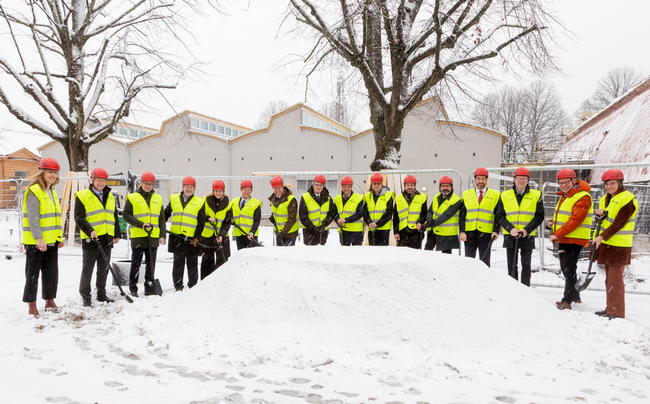
Stora Enso is Europe's largest supplier of wood products and has delivered wood materials to around 20,000 construction projects worldwide. In addition to being the only renewable building material, building in wood halves the construction time and reduces transport to the construction site by up to 80 percent. Stora Enso’s wood products come from sustainable managed forests.
The ground-breaking ceremony for Wisdome Stockholm took place on 21 February with Sweden’s Minister of Culture Jeanette Gustafsdotter together with partners in the project. The inauguration of Wisdome Stockholm is planned for 2023.
Key facts about Wisdome Stockholm
Official start of construction: 2022
Estimated opening: 2023
Location: Sweden’s National Museum of Science and Technology, Stockholm
Size of the building: 1,325 square meters
Dome size: 21.6 meters in diameter, 12.2 meters high
Number of seats in the dome theatre: 100
Main partner and supplier of wood materials: Stora Enso
Architect: Elding Oscarson
Specialist Timber contractor: Blumer Lehmann
Construction contractor: Oljibe
Partners: Ericsson, Vectura, NIBE
Financiers: Wallenberg Foundations, Erling-Perssons Foundation, Stora Foundation, Fritz Öst Foundation
Wisdome is a national initiative where Sweden's five leading science centers collaborate; Malmö Museums, Universeum in Gothenburg, Curiosum in Umeå, Tekniska museet in Stockholm with Visualization Center C in Norrköping as the hub of the collaboration.
Part of the global bioeconomy, Stora Enso is a leading provider of renewable products in packaging, biomaterials, wooden construction and paper, and one of the largest private forest owners in the world. We believe that everything that is made from fossil-based materials today can be made from a tree tomorrow. Stora Enso has approximately 22,000 employees and our sales in 2021 were EUR 10.2 billion. Stora Enso shares are listed on Nasdaq Helsinki Oy (STEAV, STERV) and Nasdaq Stockholm AB (STE A, STE R). In addition, the shares are traded in the USA as ADRs (SEOAY). storaenso.com
New range of beauty innovation from CHANEL with sustainable Sulapac material
CHANEL has just launched an innovative and eco-responsible approach to beauty combining skincare, makeup and a fragrance mist: N°1 de CHANEL.
Its formulas honor ingredients of natural origin that are renewable and have reduced environmental impact. They contain up to 97% ingredients of natural origin*** without compromising effectiveness, safety or sensory quality. The eco-design packaging includes sustainable Sulapac material, and faithful to the House of CHANEL’s exacting standards, every detail was considered.
 The full range of packaging for the N° 1 de CHANEL is eco-designed and includes lids that contain bio-based materials. They are the result of a collaboration that began in 2018 between the CHANEL Fragrance and Beauty Packaging Innovation Department and Finnish material innovation start-up Sulapac.
The full range of packaging for the N° 1 de CHANEL is eco-designed and includes lids that contain bio-based materials. They are the result of a collaboration that began in 2018 between the CHANEL Fragrance and Beauty Packaging Innovation Department and Finnish material innovation start-up Sulapac.
“The new-generation lid of the N° 1 de CHANEL Cream is made of 90% bio‑based materials from renewable resources: FSC™* certified wood chips that are by-products of industrial side-streams combined with camellia seed shells. It was a genuine technological challenge that has now resulted in several patent-pending** applications. Faithful to the House of CHANEL’s exacting standards, every detail was considered at length including the sensory quality of the material; its resistance to heat variations; the unique sound of the jar closing; how it feels in the hand; and the depth of the matte satin finish engraved with the iconic double C,” CHANEL explains.
It took more than 40 trials before Sulapac’s R&D Manager, Piia Peltola was able to find the right material recipe. “It has been fascinating to see up-close this level of devotion to the brand feel and its environmental impact,” Piia Peltola says. “Our first big task was to innovate a bio-based material that contains by-product camellia seed shells whilst making it resistant to heat and moisture. It was just a concept idea when we started. Camellia is inherently hydrophilic material, meaning it absorbs water strongly. Solving this was a great accomplishment from us, and the first time we have incorporated such ingredient in our packaging material in a bespoke way,” Peltola explains the scope of this collaboration.
“By this example we encourage more companies to choose sustainable packaging materials,” says Suvi Haimi, CEO and Co-founder of Sulapac. “It was fascinating to combine by products like camellia seed shells and FSC™* certified wood chips in this unique packaging material. Now, we have proficiency in also utilizing other side streams without compromising the functionality of the final product. It helps us to reduce the environmental footprint even further,” Haimi concludes.
* Forest Stewardship Council: Wood from responsibly managed, FSC certified forests and other supervised sources.
** Three international patent applications pending.
*** According to ISO 16128 standard.
About Sulapac
Sulapac® is an award-winning, patented, bio-based alternative for conventional plastics. It accelerates a plastic waste-free future with sustainable materials that are beautiful and functional. Like nature. The Helsinki-based company was founded in 2016 by Dr. Suvi Haimi, Dr. Laura Tirkkonen-Rajasalo and Dr. Antti Pärssinen. Its investors include CHANEL and Sky Ocean Ventures. Sulapac was ranked one of Europe’s 100 hottest startups by WIRED UK in 2018, 2019 and 2021, and one of the Nordic startups to watch in 2021 by Sifted, backed by the Financial Times. Join the forerunners. Together we can save the world from plastic waste.
Further information
Suvi Haimi, CEO and Co-Founder
This email address is being protected from spambots. You need JavaScript enabled to view it., +358 44 029 1203
Antti Valtonen, Head of Communications
This email address is being protected from spambots. You need JavaScript enabled to view it., +358 40 729 4793
New DRI and EAF installations at ArcelorMittal Dofasco in Hamilton, Ontario will reduce carbon emissions by approximately 60%
ArcelorMittal (the ‘Company’) has just confirmed with the Government of Ontario its plan for a c. CAD$1.8 billion investment in decarbonisation technologies at ArcelorMittal Dofasco’s plant in Hamilton. As announced in July, 2021, the investment will reduce annual CO2 emissions at ArcelorMittal’s Hamilton, Ontario operations by approximately 3 million tonnes, which represents approximately 60% of emissions. This means the Hamilton plant will transition away from the blast furnace-basic oxygen furnace steelmaking production route to the Direct Reduced Iron (DRI) – Electric Arc Furnace (EAF) production route, which carries a significantly lower carbon footprint.
The project is scheduled to be complete by 2028, although the Company is looking for opportunities to accelerate the project timelines.
The new manufacturing processes contribute to a considerable reduction of CO2 emissions and deliver other positive environmental impacts including the elimination of emissions and flaring from coke making and ironmaking operations.
The investment was contingent on support from the governments of Canada and Ontario. In July 2021 the Government of Canada announced it will invest CAD$400 million in the project and today, the Government of Ontario announced it will invest CAD$500 million in the project. This secures project funding and firms up the investment.
Today’s announcement was made at an event in ArcelorMittal Dofasco’s plant in Hamilton, which was attended by ArcelorMittal North America CEO John Brett, ArcelorMittal Dofasco President and CEO Ron Bedard, Ontario Premier Doug Ford, Minister of Economic Development Job Creation and Trade Vic Fedeli, Minister of Energy Todd Smith and MPP Donna Skelly.
At the heart of the plan is a 2.5 million tonne capacity DRI facility and an EAF facility capable of producing 2.4 million tonnes of high-quality steel through its existing secondary metallurgy and secondary casting facilities. Modification of the existing EAF facility and continuous casters will also be undertaken to align productivity, quality and energy capabilities between all assets in the new footprint.
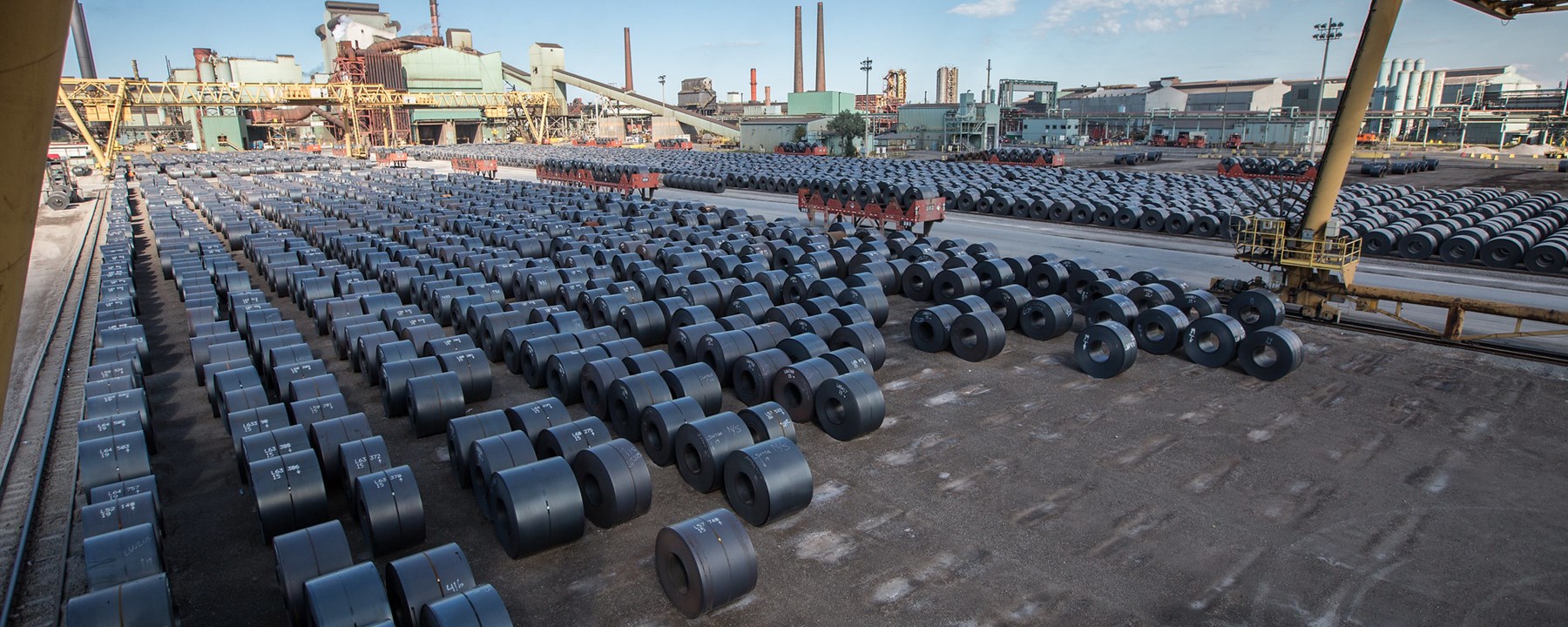
This project contributes to the sustainability of well-paying skilled positions in advanced manufacturing and is also expected to support as many as 2,500 jobs during the engineering and construction phases. It will also support ArcelorMittal Dofasco’s customers decarbonisation ambitions while further enhancing ArcelorMittal Dofasco’s capability to support the most demanding product segments including automotive exposed, advanced high strength steels, and consumer packing.
This new production route for ArcelorMittal Dofasco will provide a technically advanced manufacturing environment for operations, maintenance, and technology staff to work in, with improved health and safety. New positions, training, and development will be provided for employees moving from existing business units to new assets, with approximately 160,000 training hours required to transition our workforce to the new footprint.
Announcing the investment, Vic Fedeli, Minster of Economic Development Job Creation and Trade said:
“From day one, our government’s plan has been to unleash Ontario’s economic potential by reducing the cost of doing business in Ontario by nearly $7 billion a year. This once-in-a-generation investment to transform the province into a world-leading producer of green steel is a major step forward as we strive for a full economic recovery and transform our auto supply chains to build the car of the future – right here in Ontario.”
Speaking at the announcement in Hamilton, John Brett, ArcelorMittal North America CEO, said:
“Reducing our CO2 emissions intensity worldwide by 25% by 2030 is an ambitious target for a steel and mining company; but we believe it is achievable and that it is our responsibility to invent or innovate the processes and technologies that will enable us to reach that goal. As part of that, we understand that in the coming years, the assets used to make steel will undergo a transformation on a scale not seen for many decades.”
Highlighting the impact of the announcement, ArcelorMittal Dofasco President and CEO Ron Bedard said:
“This is the most significant construction project ever undertaken at Dofasco. And the most important achievement in the project timeline will be that everyone working on site is working safely and returning home to their family unharmed.
“All options for the newest, most advanced technology that achieves maximum carbon reduction for steelmaking, enhanced product capability and quality, and advanced manufacturing employment opportunities were explored. Extensive benchmarking and modelling were also completed in preparing the ultimate plan for the sustainability of the environment, the company, employees, customers, and the community.”
In addition to Canada, the Company has also announced investments in decarbonisation technologies in Belgium, France and Spain. Combined investment for the four projects totals US$5.6 billion, with anticipated carbon emissions reduction totalling 19.5 million tonnes, which is equivalent to the greenhouse gas emissions from 4,240,858 cars being driven for a year[1]. These projects sit at the heart of the Company’s target to reduce its CO2e emissions intensity by 25% by 2030 group-wide, and in Europe by 35% by 2030.
[1] Calculated using the US EPA greenhouse gas equivalencies calculator - https://www.epa.gov/energy/greenhouse-gas-equivalencies-calculator
Rottneros and Arctic Paper will invest in a fiber tray factory
The boards of Rottneros and Arctic Paper have decided to invest 15 million euro in a moulded fiber tray factory at Arctic Papers premises in Kostrzyn, Poland. The factory will be operated in a separate legal entity and as a 50/50 joint venture, in line with the LOI that was signed by the parties on October 22nd, 2021.
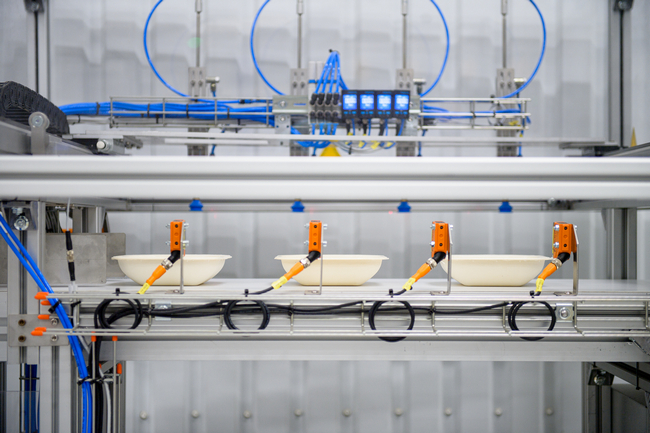
“We are seeing a rapidly growing demand for moulded fiber trays, and we are pleased to announce that we are now ready to move forward with our plan to launch the first industrial scale production of high barrier fiber-based packaging. The collaboration of the two parties combines Arctic Papers favorable location and existing infrastructure with Rottneros technological know-how and will bring benefits to both companies”, said the CEOs of Rottneros and Arctic Paper, Lennart Eberleh and Michal Jarczyński, in a joint statement.
The production of moulded fiber trays will be suitable for high barrier packaging, modified atmosphere packaging with extended shelf life as well as for packaging with lesser functional demands, all based on Rottneros primary fiber. The products can withstand heat and are excellent for ready-made food - both frozen and chilled dishes - which constitutes a rapidly growing market. The start-up of the new factory is planned for the end of 2023.
The investment is expected to amount to 15 million euro and will produce around 80 million trays per year, with an estimated annual revenue of 9 – 11 million euro and an EBIT margin of more than 20 percent when fully operational.

The joint venture will be a Polish registered company and financed through a combination of bank loans and equity contribution from the shareholders.
Rottneros is an independent producer of market pulp. The Group comprises the parent company Rottneros AB, listed on Nasdaq Stockholm, and its subsidiaries Rottneros Bruk AB and Vallviks Bruk AB with operations involving the production and sale of market pulp. The Group also includes Rottneros Packaging AB, which manufactures fibre trays, the wood procurement company Rottneros Baltic SIA in Latvia and the forest operator Nykvist Skogs AB. The Group has about 316 employees and had a turnover of approximately 2,3 billion SEK in the 2021 financial year.
New ABB study on industrial transformation unveils critical relationship between digitalization and sustainability
ABB has just released the findings of a new global study[1] of international business and technology leaders on industrial transformation, looking at the intersection of digitalization and sustainability. The study, “Billions of better decisions: industrial transformation’s new imperative,” examines the current take-up of the Industrial Internet of Things (IoT) and its potential for improving energy efficiency, lowering greenhouse gas emissions and driving change. The goal of the new ABB research is to spur discussion within industry regarding opportunities to leverage the Industrial IoT and empower companies and workers to make better decisions that can benefit both sustainability and the bottom line.
“Sustainability goals more and more are a crucial driver of business value and company reputation, and Industrial IoT solutions are playing an increasingly important role in helping enterprises achieve safe, smart and sustainable operations,” said Peter Terwiesch, President of ABB’s Process Automation business area. “Unlocking insights hidden in operational data holds the key to enabling literally billions of better decisions throughout industry and acting upon them, with significant gains in productivity, reduced energy consumption and lower environmental impact.”
The study, commissioned by ABB, found that an organization’s “future competitiveness” is the single greatest factor – cited by 46 percent of respondents – in industrial companies’ increased focus on sustainability. Yet while 96 percent of global decision-makers view digitalization as “essential to sustainability,” only 35 percent of surveyed firms have implemented Industrial IoT solutions at scale. This gap shows that while many of today’s industrial leaders recognize the important relationship between digitalization and sustainability, the adoption of relevant digital solutions to enable better decisions and achieve sustainability goals needs to accelerate in sectors like manufacturing, energy, buildings and transport.

Further key learnings from the study
- 71 percent of respondents reported greater priority given to sustainability objectives as a result of the pandemic
- 72 percent said they are “somewhat” or “significantly” increasing spending on Industrial IoT due to sustainability
- 94 percent of respondents agreed the Industrial IoT “enables better decisions, improving overall sustainability”
- 57 percent of respondents indicated the Industrial IoT has had a “significant positive effect” on operational decision-making
- Perceived cybersecurity vulnerabilities are the #1 barrier to improving sustainability through the Industrial IoT
Win-win scenarios with the Industrial IoT
With 63 percent of executives surveyed strongly agreeing that sustainability is good for their company’s bottom line, and 58 percent also strongly agreeing it delivers immediate business value, it’s clear that sustainability and traditional priorities of Industry 4.0 efforts – speed, innovation, productivity, efficiency, customer-centricity – are increasingly intertwined, opening up win-win scenarios for companies looking to drive efficiency and productivity while making strides on climate change.
“The International Energy Agency[2] estimates that industry accounts for more than 40 percent of global greenhouse gas emissions today,” said Terwiesch. “If we are to reach climate objectives such as the UN’s Sustainable Development Goals and the Paris Agreement, industrial organizations need to implement digital solutions as part of their sustainability strategies. Embracing these technologies at all levels – from the boardroom to the facility floor – is key, as every member of the industrial workforce can become a better decision-maker when it comes to sustainability.”
ABB innovations for sustainability
ABB is committed to leading with technology to enable a low-carbon society and a more sustainable world. Over the past two years, ABB has reduced greenhouse gas emissions from its own operations by more than 25 percent. As part of its Sustainability strategy 2030, ABB expects to be fully carbon neutral by decade’s end and to support its global customers in reducing their annual CO2 emissions by at least 100 megatons by 2030, the equivalent of removing 30 million combustion cars from the roads each year.
ABB’s investments in digital capabilities are core to this commitment. With more than 70 percent of ABB’s R&D resources dedicated to digital and software innovations, and a robust ecosystem of digital partners, including Microsoft, IBM and Ericsson, the company has established a leading presence in Industrial IoT.
The ABB AbilityTM portfolio of digital solutions enables a host of industrial use cases to power improvements in energy efficiency, resource conservation and circularity, including condition monitoring, asset health and management, predictive maintenance, energy management, simulation and virtual commissioning, remote support and collaborative operations. Examples of ABB’s more than 170 Industrial IoT solutions include ABB AbilityTM Genix industrial analytics and AI suite; ABB AbilityTM Energy and Asset Manager; ABB AbilityTM Condition Monitoring for Powertrains; and ABB AbilityTM Connected Services for industrial robots. To learn more about ABB Ability, visit: https://global.abb/topic/ability/en
To continue the conversation on this important topic, ABB will host an industry webinar on Wednesday, March 2, focused on the convergence of digitalization and sustainability, and how the Industrial IoT and related technologies can help save energy, conserve resources, and improve safety for personnel and communities. Leading technology journalist and climate investor Molly Wood will moderate this virtual panel discussion featuring senior executives, best-selling authors and other thought leaders to explore this convergence and how industrial organizations can empower better, more sustainable decision-making throughout the enterprise.
ABB (ABBN: SIX Swiss Ex) is a leading global technology company that energizes the transformation of society and industry to achieve a more productive, sustainable future. By connecting software to its electrification, robotics, automation and motion portfolio, ABB pushes the boundaries of technology to drive performance to new levels. With a history of excellence stretching back more than 130 years, ABB’s success is driven by about 105,000 talented employees in over 100 countries. www.abb.com
Smartening up temperature control
A smart power controller does what it says on the tin. It is smart because it has a microprocessor and sophisticated programming. It controls power using sensors that monitor voltage and current, adapting and making decisions as conditions change within the parameters of the application that it’s being used. However, it’s a valuable tool that is often overlooked. Here, Erick Rios, product manager for controls at industrial technology company Watlow, explores why smart power control is vital in heating applications.
There are many types of power switches that are used in commercial and industrial applications. Mechanical relays and contactors are ideal for applications where they are not switched very often because they are relatively inexpensive and do not produce much heat. But for precise control of electric heating, these switch types are a poor choice because they wear out and fail quickly if switched frequently. In this instance, smart power controllers are a sensible choice.
Improved performance
Being able to control the output based on the measurement of power delivered to the load improves temperature control performance because it compensates for line voltage fluctuations or even partial load failures faster. This means that there is significantly less deviation from the temperature set point than would occur with the same temperature controller paired with a traditional solid-state power switching product.
The temperature controller and power controller work together. The temperature controller measures the temperature with a sensor and determines how much of the available power is necessary to achieve set point. The power controller interprets the output from the temperature controller and controls the delivered power accordingly. Finally, the power controller adjusts the power delivered for voltage fluctuations and to the best of its ability when there is a partial failure of the heater.
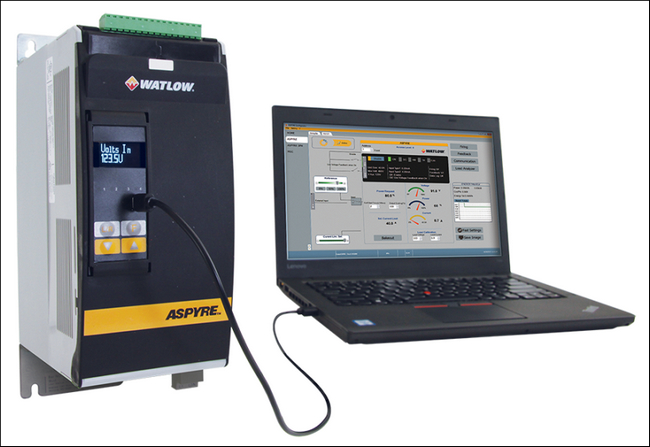
Process and equipment characterization
The smart power controller measures the line voltage and the current through the load. With that information it calculates the load resistance and how much power is being delivered by the heater. Equipment manufacturers can use this information during commissioning to identify if there is a problem. For example, abnormally high resistance could indicate a poor connection that might eventually cause a premature failure or even a fire if not corrected.
For instance, power controllers can help companies monitor the load parameters during equipment installation and compare the profile with previous known good start-ups. By doing this, they can receive warning of issues localized to the heated zone, allowing preventative action to be taken before a failure occurs.
End users can similarly monitor these parameters overtime and correlate them to good and bad production results.
Integrated communication
Integrating a smart power controller with other automation equipment allows process variables to be monitored remotely and allows operators and line maintenance personnel to quickly locate problems.
Consider this example, from a Watlow customer. A manufacturer of power transmission cables once relied on employees to periodically check the current gauges visually for each zone of extruders that coat the cables. On shifts with lower staffing, faulty product was often the first indication of a problem. The customer replaced the solid-state power controllers in the extruders with the ASPYRE® DT power controllers from Watlow, so they could determine if cable needed to be scrapped or whether production could continue until the scheduled maintenance.
Watlow’s range of heating equipment, including its ASPYRE controllers, is frequently used by heavy duty industrial companies in petrochemicals, heat treatment and power generation. The ASPYRE model is available between a range of 35 to 2,100 amps to support a wide variety of applications. For example, a single high amp ASPYRE unit is ideal for applications using multiple small units with low range amps.
Overall, the smart features and functionality of smart power controllers enables users to minimize scrap and unscheduled down time — improving operations and output.
To find out more about Watlow’s industrial heating solutions, visit www.watlow.com.
